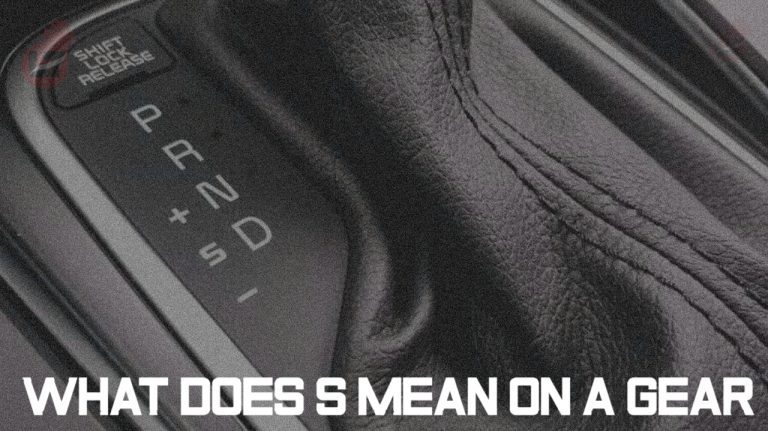Are you curious about what the letter “S” on your car’s gear shift means? Read on…
Automatic gear transmission has evolved significantly, and unlike manual transmission cars, modern automatic transmission vehicles feature letters on their shifters instead of numbers. Some letters or modes include P, R, N, D, and S, while others include B or L.
The “S” mode stands for sport, providing a more dynamic driving experience by increasing the sensitivity of your car’s throttle response. In S mode, you’ll notice that your car’s RPM climbs faster with more fuel injected into the cylinders than when using the D or drive mode. Additionally, S mode keeps your car in gear for longer, allowing it to reach higher RPMs before automatically shifting to a higher gear. This results in faster acceleration and a sportier driving feel, accompanied by the loud rumbling sounds of your engine.
You can use the S mode on open highways when you need more power to overtake the car in front of you. Once you switch to S mode, your vehicle will hold a particular gear depending on your throttle, and the engine control unit (ECU) will automatically shift to the equipment best suited for the situation based on your driving habits. Many cars come with paddle shifters behind the steering wheel, which can move up or down when you’re in S or Sport mode.
However, there are some drawbacks to using the S mode. Your car’s fuel efficiency may suffer because it requires more fuel to hold the S gear and reach high RPMs. If you want to save on fuel, it’s best to stick with the D mode.
How To Use S Gear In Automatic Cars?
If you’re unfamiliar with the S gear mode, you can try the following steps to experience the difference in throttle response and automatic gear shifting between S and D modes.
Here are the steps for using the S mode in cars:
- Use the S mode on open highways, but avoid using it in areas with heavy traffic or while parked to prevent rapid acceleration.
- Start by shifting to the D mode. This is crucial because it allows you to drive in a fuel-efficient manner. Find a road with less dangerous high-speed runs.
- To switch to S mode, press the button on your gear selector. This button is the same one you use to change from P to D.
- It’s essential to keep in mind that you don’t need to press the button on the gear selector when switching back to N or D modes. Push it back to its original position immediately after using the S mode. Doing so will prevent accidentally shifting to the wrong gears, such as R and P, which can damage your transmission.
How about other letters on the gear shift?
1. Parking Mode (P)
Using the P mode is essential to ensure that your car is parked correctly. However, you should avoid using the P mode when stuck in traffic and switch to the N mode instead. This is because the P mode locks your car’s transmission by placing a rod between the transmission gear’s teeth, making it impossible to move.
Use the P mode only when parking your car, as this will provide maximum braking power, especially on sloped areas.
2. Reverse Mode (R)
The reverse mode is commonly used to drive a car backward. However, when the vehicle is in N or D mode, it’s impossible to shift to the R mode without pressing the button on the gear selector. This safety measure is essential to prevent accidental shifting to the reverse mode while driving forward, which could lead to accidents.
Additionally, shifting to the P mode is necessary when parking to prevent the car from moving, and it’s important to avoid using the parking mode during traffic as the N mode is more appropriate in such situations.
3. Neutral Mode (N)
When your car is in neutral mode, the gear is disconnected from the engine, so your wheels won’t be driven. The N mode is similar to the P mode, with the only difference being that the P mode engages a rod that locks the transmission gears, whereas the N mode does not.
4. Drive Mode (D)
The drive mode is commonly used to connect the transmission gears to the engine, allowing the wheels to spin efficiently. In an automatic transmission, the car’s electronic control unit (ECU) selects the most appropriate gear based on the throttle and speed.
5. Brake Mode (B) or Low Gear Mode (L)
Car manufacturers often label their vehicles with either L mode or B mode, which are essentially the same thing but differ based on the manufacturer’s preference. These modes engage the low gear for several reasons. Although low gear provides better torque, it sacrifices speed. However, situations like uphill drives and towing require high torque. Additionally, you can use the B or L mode for engine braking while descending downhill.
As an Amazon Service LLC Program Associate, V. Auto Basics earns from qualifying purchases. See Our Affiliate disclaimer.
